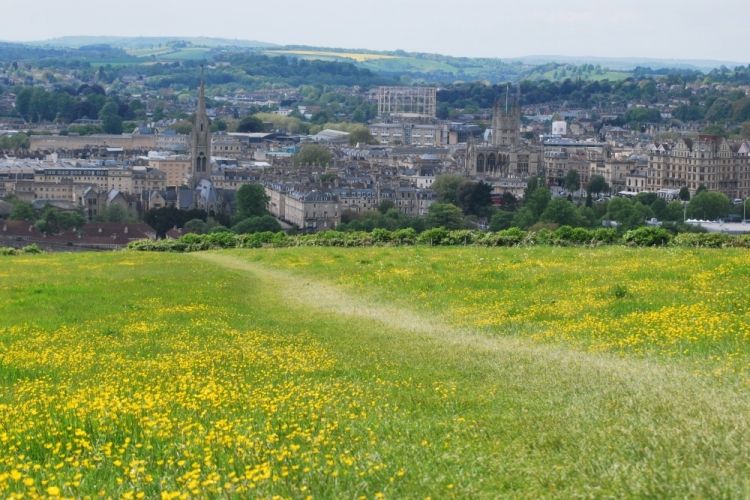The Cotswolds – What Are They?
The Cotswolds are a range of hills in western England, part of a region sometimes referred to as the Heart of England, an area 40 miles across and 120 miles long. These figures are open to debate, as everyone will have their own opinion of where the Cotswolds begin and end but it is certain that they roll principally through the counties of Gloucestershire and Oxfordshire, extending into parts of Wiltshire, Somerset, Worcestershire, and Warwickshire. Although the name refers originally to the hills, it has come to be associated with a broad geographical area with certain architectural, historical, and geological characteristics. If compelled to give a broad, modern definition of the boundaries, they would be described by three motorways – the M4 in the south, the M5 in the west, and the M40 to the east, plus a few bits outside each. Everywhere within the area encompassed by those roads, is the Cotswolds. More than any geographical definition, the Cotswolds have become a brand: a characterization of rural England, just as red double-decker buses represent London. But whereas London is multi-faceted, with a host of competing stereotypes to keep everyone happy, the Cotswolds have been saddled with the label of quaint coziness, where nothing has changed since about 1950. That is all very well as a selling point for the tourism industry, which tends to freeze its victims in convenient packages, but unjust to the people who live and work in a region they love and which is far from lifeless.
Nature Of The Hills And Characteristics Of The Area
The western and northwestern boundaries of the Cotswolds are essentially a steep escarpment, sometimes called the Cotswold Edge, which overlooks the Severn Vale and the Avon Valley in Warwickshire. From here an undulating slope, cut with valleys and streams, runs southeast. On the eastern boundary lies the city of Oxford and in the southeast, the upper reaches of the Thames Valley, including towns like Lechlade, Tetbury, and Fairford. The southern limit is in the area around Bath. To the north, an area close to Stratford-on-Avon. The highest point is Cleeve Hill (330 m/1083 ft), overlooking the town of Cheltenham.
The area is characterized by attractive small towns and villages built of the underlying Cotswold stone (a yellow oolitic limestone, rich in fossils), many with magnificent ‘wool’ churches that grew out of the prosperous medieval wool trade. It is these villages, in the main beautifully preserved, that more than anything have come to be associated with a Cotswold identity.
Origin Of The Name?
There are several explanations. The most commonly accepted derivation is from ‘cot’, meaning ‘sheep enclosure’, and ‘wold’ meaning ‘hill’ – thus, sheep enclosure in rolling hillsides. Another explanation prefers ‘Cod’s-wold’, or ‘Cod’s high open land’, Cod, according to this, refers to an Old English personal name, as in the Cotswold hamlet of Cutsdean.
Another Name – AONB
In 1966 the Cotswolds were designated an Area of Outstanding Natural Beauty (AONB), amounting now to an area of 2,038 square kilometers (787 square miles), the largest in England and Wales. The official boundaries of the AONB define the region in terms of a protected area, although they do not always extend to what is popularly thought of as the area as a whole. An AONB is an official title, which, as with National Parks, has its origins in post-Second World War movements to protect the countryside. Areas of Outstanding Natural Beauty are not owned by the Government and are funded from a variety of sources. Central government funding is available through agencies like Natural England and the Countryside Council for Wales and is match-funded by contributions from other sources, including the lottery, landfill tax, and European funds. The principal aim of these organizations is to maintain the character and integrity of the area in question. The aim is a laudable one, although there are plenty that might argue that protection and conservation have stifled the natural evolution of such areas. Others argue that the protection is not rigorous enough.
The Cotswolds were primarily designated an Area of Outstanding Natural Beauty, not for the villages of the region so much as for its rare limestone grassland habitats and ancient beech woodlands, in some cases the last refuge for endangered wildlife. Within the Cotswold AONB are five European Special Areas of Conservation, three National Nature Reserves, and over eighty Sites of Special Scientific Interest.


0 Comments